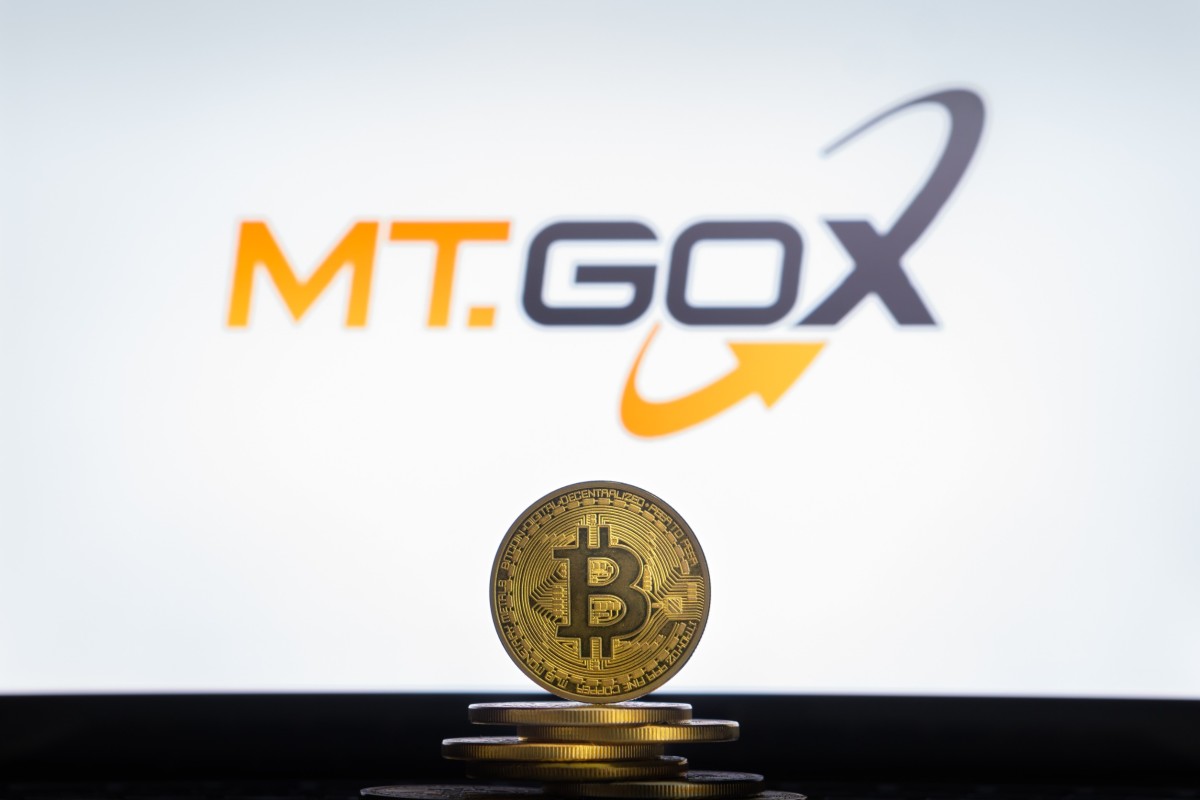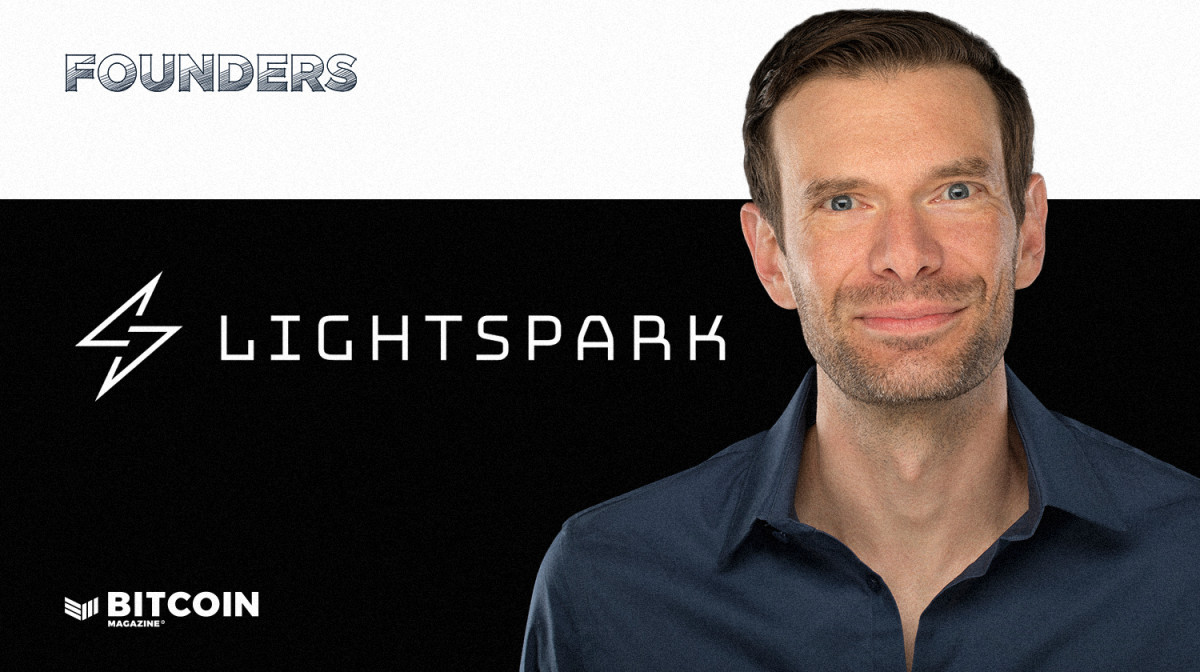business
Would You Pay $40K in Solana for a Date With a Playboy Playmate?
Published
3 weeks agoon
By
admin

Crypto Twitter’s attention span tends to be short-lived, with fresh controversial topics quickly replacing the previous talking points—but Jaylene Cook recently found herself the main topic of conversation on the timeline for more than the typical news cycle.
That’s thanks to Only1, a crypto OnlyFans alternative on the Solana blockchain, where she offered three spots for a date with her—for 250 SOL, or a cool $36,000 apiece as of this writing.
Her top-tier Date Night Pass offers the following benefits: 1-on-1 video calls, an opportunity for her to fly you out or fly to you (at the buyer’s expense), a five-star hotel booked with a date, and bragging rights that you dated a Playboy Playmate.
Cook went viral yet again last week when the date was actually purchased for about $41,000 worth of SOL at the time, and people are still talking about it. She spoke with Decrypt for an exclusive interview about the viral date offer and why she’s a fan of the Solana platform.
A THREAD #250SOL 🧵
Some of you already know me. I’ve been in the solana ecosystem since its early conception.
First investing at $4 and riding that mfer all the way to $260 before doubling down again at $8 last year
I’ve been full time web3 for the last 3 years. During… pic.twitter.com/L5YX9EvOJU
— Jaylene🐰 250SOL (@playmatejaylene) June 4, 2024
As a former Playboy Playmate, Cook was no stranger to the intricacies of adult entertainment. However, Only1 intrigued her from the moment the platform reached out to her.
“Only1 had reached out late last year, informing me of their platform and their goal of being the OnlyFans of Web3,” Jaylene recalled. “I didn’t sign up right away but loved the idea, so I kept them on my radar.”
However, she changed her mind when she interacted with Ansem, a prominent Crypto Twitter influencer known for boosting meme coins like Solana’s Dogwifhat (WIF). He teamed with Only1 for an “Ansem’s Angels” promotion to bring attention to the platform, with the prominent influencer taking a 5% cut of sales. Only1 does not otherwise offer referral bonuses.
“I had been engaging with Ansem online when Only1 reached out again, this time to discuss becoming one of ‘Ansem’s Angels’ for a campaign they had planned,” she said. “I saw this as a tremendous opportunity to onboard new users and creators to the platform.”
The secrets out!
I’m officially one of Ansems Angels 😇Join to view my exclusive content that’s too spicy for the timeline 🔥🌶️
If you’re the first to grab my Date Night pass.. I’ll fly you out to hang with me and show you an unforgettable time ❤️
Grab it before @blknoiz06… pic.twitter.com/jSubPhtARn
— Jaylene🐰 250SOL (@playmatejaylene) May 24, 2024
The allure of Only1 extended beyond a different option for sharing exclusive, gated content. Jaylene highlighted the platform’s unique features compared to traditional platforms like OnlyFans.
“I like the fact that Only1 being on-chain allows the customer to have true privacy,” she said. “From a creator’s perspective, the biggest issues with traditional platforms such as OnlyFans are issues with payment processing. Only1 solves this issue as the payments go directly to your wallet, providing creators with peace of mind and full control over their earnings.”
Beyond just Cook and her “Date Night,” Only1 said last week that transaction volume for primary passes on Only1 sales had reached $62,000 over the previous two weeks.
In the past two weeks, transaction volume for primary passes sales reached $62,000. Let’s deep dive into the largest one from @playmatejaylene.
12,077.17 $LIKE was bought and burned as a result of this single transaction – We are just getting started. pic.twitter.com/PuIu3mEWPx
— Only1 (@JoinOnly1) June 6, 2024
A subscriber of Cook’s and other creators who asked to remain anonymous told Decrypt that the experience with Only1 feels more “genuine” than on other sites like OnlyFans.
“I feel like at least the people on the platform right now are active on Twitter and on platforms that are related to crypto,” they shared. “It does feel more genuine than it does with other models or pages that I’ve talked to. It feels more authentic because you’re constantly seeing them talking in Spaces or tweeting, or you know they’re a bit more active.”
However, they’ve encountered what they see as mistaken beliefs about being a subscriber.
“I do think it’s a big misconception about being a ‘simp’ and sending money for attention with girls, because I do feel—at least from the experiences that I’ve had—that you can actually build a genuine connection,” they said. “Obviously the monetary aspect sometimes makes it blurred, but at the end of the day you both know the situation.”
“I do find it enjoyable to be able to talk to girls that I wouldn’t on a regular basis, or be scared or shy to come up to in person,” they added. “Doing it online helps.”
Despite the virtual nature of her involvement so far, Jaylene says she’s “totally open” to real-life experiences with her fans. She hasn’t gotten to that point yet, but broadly she’s been happy with the response to Ansem’s Angels and her pricey dates.
“Joining Ansem’s Angels came with its share of surprises, both good and bad,” Cook admitted. “I always expect FUD with campaigns like this, but I was surprised at just how much there was. It was perfect for making the campaign go viral and certainly landed a lot of eyes on the project.”
But beyond the hate and the noise, she found camaraderie among fellow creators online.
“We all support each other’s content and hype each other up, because we understand the power of networking,” Cook explained. “There’s also an element of safety and other things we chat about, along with ideas and feedback on how to continue improving the product and experience for all users.”
Addressing the controversy surrounding the 250 SOL date, Jaylene leaned into it with characteristic humor and resilience. She even launched her own meme coin called 250SOL.
“The meme coin was created as a sort of ‘fuck you’ to the FUD and a reminder to stay bullish on yourself,” she said. “I wanted to do something fun for the degens that were fueling the FUD.”
“It made me feel like I had just bowled a strike!” she laughed. “I’ve been in space long enough to know that a little hate is bullish and FUD is fuel.”
Looking ahead, Cook remained tight-lipped about future plans but hinted at developments on the horizon. “I’m a big believer in under-promising and over-delivering,” she teased. “So I guess you’ll just have to wait and see.”
As for the person who purchased the 250 SOL date? They have yet to reveal themself publicly.
Edited by Andrew Hayward
Daily Debrief Newsletter
Start every day with the top news stories right now, plus original features, a podcast, videos and more.
Source link
You may like


The Federal Reserve, Custodia Bank, and the Battle over Sovereignty


Coinbase stock to $1,700? This crypto investor thinks so


Multicoin Capital To Fund Crypto-Friendly US Candidates In Solana


Multicoin to Match Up to $1 Million in Solana Donations to Pro-Crypto Candidates


Multicoin Capital pledges up to $1m to pro-crypto Senate candidates


MATIC Price Crash: Reaching A Two Year Low
Bitcoin price
Bitcoin Price Falls as Mt Gox Starts Repayments
Published
11 hours agoon
July 5, 2024By
admin

The Bitcoin price plunged this week, sinking below $55,000 for the first time since February as the now-defunct Mt Gox exchange began distributing billions in owed funds.
Mt Gox announced it has started repaying creditors, ending years of waiting stemming from its 2014 collapse. The Japan-based exchange will distribute approximately $9 billion worth of Bitcoin, Bitcoin cash, and fiat currency.
The news added heavy selling pressure on Bitcoin, which fell over 6% on Friday to trade near $54,000. The broader Bitcoin and crypto market shed over $170 billion in 24 hours amid the declines.
On Thursday evening, Mt Gox moved around 47,000 Bitcoin worth nearly $2.7 billion from cold storage wallets to a separate address. While intentions remain uncertain, the transfer fueled concerns creditors may sell portions of recovered coins.
The payouts come after protracted bankruptcy proceedings for Mt Gox, which suffered a massive hack in 2014 that resulted in 850,000 Bitcoin being lost. It was the largest crypto exchange at the time, handling 70% of all Bitcoin transactions.
The repayment of creditors marks a major step toward resolving Mt Gox’s decade-long insolvency case. However, the influx of previously lost coins threatens to shift supply and demand dynamics.
Some analysts estimate selling pressure from payouts could push Bitcoin’s price as low as $50,000 in the near term. Ongoing transfers from the German government have also weighed on the market.
However, others argue the amounts equate to a small fraction of daily Bitcoin trading volumes. They say most creditors are long-term investors unlikely to dump holdings en masse, limiting impacts.
Nonetheless, analysts widely expect significant volatility ahead between Mt Gox distributions and the start of German government sales in July.
Source link
bitcoin exchanges
German Government Moves Over $75 Million in Bitcoin to Exchanges
Published
1 day agoon
July 4, 2024By
admin

The German government has transferred another chunk of its massive Bitcoin reserves to exchanges.
According to blockchain data, the German Federal Criminal Police Office (BKA) moved roughly $75 million worth of Bitcoin across multiple transactions on July 4th. The funds were spread across exchanges, including Coinbase, Kraken, and Bitstamp.
This comes after the government shifted around $315 million in bitcoin to various platforms since mid-June. Germany has offloaded over $390 million in Bitcoin in under a month.
In 2013, the BKA seized nearly 50,000 bitcoin linked to the former operator of the film piracy website Movie2K. The stash is estimated to be worth $2.3 billion at today’s prices.
The steady flow of bitcoin to exchanges signals Germany’s potential plans to liquidate portions of its reserves. This has sparked fears of impacts on Bitcoin’s market price, which dipped below $58,000 this week.
However, the amounts transferred so far make up a relatively small share of the BKA’s massive Bitcoin trove. After the latest movements, Germany still holds around 40,000 Bitcoin.
The sales mirror similar transfers by the U.S. government in recent weeks. America also holds Bitcoin confiscated from criminal cases, prompting concerns it may be selling reserves.
The liquidations come as creditor repayments from Mt. Gox’s 2014 collapse appear set to begin in July. The timing threatens to compound selling pressure on Bitcoin.
However, proponents argue the amounts equate to a tiny fraction of daily Bitcoin trading volumes.
Source link
business
Lightspark Enables Institutions To Use The Bitcoin Lightning Network
Published
2 days agoon
July 4, 2024By
admin

Company Name: Lightspark
Founders: David Marcus, Kevin Hurley, Christina Smedley, James Everingham, Christian Catalini, Jai Massari and Tomer Barel
Date Founded: April 2022; Series A May 2022
Location of Headquarters: Los Angeles, CA
Amount of Bitcoin Held in Treasury: N/A
Number of Employees: 45
Website: https://www.lightspark.com/
Public or Private? Private
Kevin Hurley and the team at Lightspark want to make it easier for institutions and everyday people to transfer value via bitcoin.
This is why they’ve created Lightspark, a Lightning Service Provider (LSP) — and more — that offers enterprise-grade infrastructure that enables companies around the world as well as the customers for those companies to make payments globally using the Bitcoin Lightning Network.
“We want to carry on the vision that we originally had with Diem,” Hurley told Bitcoin Magazine. “And that was to really open up the financial world, make it into something where you can send money as easily as you send data packets today.”
Hurley also shared why the team at Lightspark chose to build on Bitcoin.
“Some of the learnings from [Diem] are that you really need something that’s truly decentralized, something that’s a neutral protocol and something with a lot of liquidity,” explained Hurley. “These are key aspects to Bitcoin and part of what makes Bitcoin so special.”
How does Lightspark work?
Lightspark considers itself a more than just a LSP because it offers a Software Development Kit (SDK), liquidity management via routing nodes, cloud based node architecture and API services that vendors can employ to build certain features or utilize certain services.
The Lightspark SDK lets customers very easily access the Lightning Network for payments without dealing with the headaches that normally come with using the network.
“We try to abstract [away] all the complexity of Lightning,” explained Hurley. “We talked to a bunch of the companies that have been in the Bitcoin space for a long time and tried to understand why they weren’t using Lightning or why they had tried and given up on it, and we heard a pretty similar refrain from all of them — it was just too complex.”
To use Lightning without an LSP, companies would normally need employees dedicated to managing and rebalancing the liquidity in their Lightning Nodes. With Lightspark, though, companies need only utilize a few lines of code provided by Lightspark to start using the Lightning Network for payments. Lightspark handles all of the technical details on the backend. Plus, Lightspark offers other features that institutions may find particularly useful.
“We have compliance features built on top of our stack,” said Hurley about how Lightspark can help companies stay compliant with FinCEN’s Travel Rule.
“We have AI built on top of our stack to make it so payments are extremely successful. We have Predict, which is like the Google Maps for Lightning. [It shows us] where traffic is backed up to help us route transactions more successfully. Then we start to tack on things like UMA or Universal Money Addresses, which allow you to send from any currency to any other currency,” he added.
Universal Money Addresses (UMA)
One of the most notable features Lightspark has architected and open-sourced is UMA.
Using Lightspark, companies can offer their clients a Universal Money Address, which is a cross between a Cash App $cashtag and an email address (e.g., $yourname@yourwallet/bank/exchange.com).
An UMA lets users send either crypto or fiat seamlessly, albeit in a custodial manner.
Hurley explained how UMA is built on top of and interoperable with LNURL and Lightning Addresses. A difference between LNURL and UMA is that UMA can be used to send fiat in its own unique way.
“You’re able to go from any currency to another currency using UMA,” shared Hurley.
“Let’s say I’m coming from Brazil, and I want to send money to someone in Mexico. Maybe I’m in Mexico visiting and I go to the 7-Eleven and want to buy something. I should be able to send from my native currency to Mexican pesos,” he added.
“With UMA, what happens is my Brazilian reals are converted instantaneously to sats. They’re streamed over Lightning and convert instantly from sats to pesos and pay out to the 7-Eleven.”
Part of the reason such transfers can happen legally is that UMA facilitates the exchange of compliance data between the different institutions with which Lightspark works, which are located around the globe.
The exchanges, neobanks, and other institutions that partner with Lightspark — all of which are regulated bitcoin/crypto custodians — have the proper money transfer licenses in their respective jurisdictions, which keep Lightspark and its partners in compliance with the aforementioned Travel Rule.
Lightspark’s Partner Institutions
Lightspark has made headlines lately, as it has signed deals with major institutions like Coinbase, Xapo, and Nubank. And as each new partner comes on board, more potential partners become interested.
“They see the growth — especially when we onboard a Coinbase — and a lot of entities have come to us and been curious about what’s happening,” said Hurley.
“They see that big players are starting to get interested and starting to see real volume on it, and they want to be involved, as well. They don’t want to be left behind because they understand that this area is growing and becoming very important,” he added.
For now, interest is coming from the more tech-forward neobanks, as these institutions want to provide services that differentiate them from traditional banks. However, Hurley noted that the major traditional banks are paying attention, too.
“The benefit [of what Lightspark provides] applies to a J.P. Morgan just as much as it applies to Nubank,” explained Hurley.
“We’ve engaged with quite a few of them. They oftentimes will need to see others do it first,” he added.
“Once they start to see real adoption, I think there will be quick adoption by them, too.”
Hurley also pointed out that there’s good reason for some of the bigger traditional financial institutions to come on board.
“Traditional financial firms have big pain points,” explained Hurley.
“They might have bank accounts in multiple countries, and, even within their own bank, transferring money takes days because they are transferring using SWIFT. They’re going from one entity in, let’s say, Argentina to one in Europe, and it takes them three to five days to transfer money. It means they have to set up correspondent banking. It’s a big burden on them and can be quite costly,” he added.
“I think they’re very excited to see something that can work more quickly, more efficiently and have better rails. It’s a net positive for everyone.”
Bullish On Bitcoin, Conscious of Reality
While Hurley and the Lightspark team believe that Bitcoin adoption will continue to grow, they’re also well aware that many people worldwide are still uncomfortable using Bitcoin.
Hurley sees Lightspark’s approach as a way to further Bitcoin adoption, while keeping in mind where the customer is coming from.
“To actually get real adoption and to keep increasing adoption, you need to meet consumers where they are, and a lot of consumers right now are comfortable with fiat,” said Hurley.
“Those folks probably don’t know anything about Bitcoin, and it’s going to take a while for them to be exposed to it. So, if you can abstract that away for them, allow them to use the currency they feel comfortable with, that helps get people on board and helps build adoption,” he added.
That said, Hurley also acknowledged that there are others who prefer to just use bitcoin and ultimately use it non-custodially before making the point that Lightspark and its partners enable users to send their bitcoin to a non-custodial wallet if they so please.
“Users can exit at any time from a custodian and go to noncustodian,” Hurley said.
He then made the point that neither Bitcoin nor Lightning currently has the potential to bring the masses to the network in a non-custodial manner, which is why companies like Lightspark and the companies it partners with are important right now.
“You can’t onboard billions of users to Bitcoin and Lightning [non-custodially] today,” explained Hurley.
“Long-term that could be possible, and we are doing a lot of exploration into how to make that happen, because we feel like it’s vital to the ecosystem,” he added.
For now, though, Hurley sees the custodial solutions that companies like Cash App, Coinbase, and, of course, Lightspark are providing as a means of getting people to use Bitcoin in a non-complicated manner.
Source link

The Federal Reserve, Custodia Bank, and the Battle over Sovereignty

Coinbase stock to $1,700? This crypto investor thinks so

Multicoin Capital To Fund Crypto-Friendly US Candidates In Solana

Multicoin to Match Up to $1 Million in Solana Donations to Pro-Crypto Candidates

Multicoin Capital pledges up to $1m to pro-crypto Senate candidates

MATIC Price Crash: Reaching A Two Year Low

Multicoin Pledges up to $1M for Pro-Crypto Senate Candidates

Crypto heists near $1.4b in first half of 2024: TRM Labs

FTX Founder Sam Bankman-Fried’s Family Accused Of $100M Illicit Political Donation

Bitcoin Price Falls as Mt Gox Starts Repayments

20% Price Drop Follows $87 Million Spending Outrage

More than 10 years since the collapse of Mt. Gox, users confirm reimbursements

Leading Telecom Company Taiwan Mobile Gets Crypto Exchange License

Here Are Price Targets for Bitcoin, Solana, and Render, According to Analyst Jason Pizzino

Bitcoin price plunges below $55k as Mt. Gox announces repayments

Bitcoin Dropped Below 2017 All-Time-High but Could Sellers be Getting Exhausted? – Blockchain News, Opinion, TV and Jobs

What does the Coinbase Premium Gap Tell us about Investor Activity? – Blockchain News, Opinion, TV and Jobs
BNM DAO Token Airdrop

NFT Sector Keeps Developing – Number of Unique Ethereum NFT Traders Surged 276% in 2022 – Blockchain News, Opinion, TV and Jobs
A String of 200 ‘Sleeping Bitcoins’ From 2010 Worth $4.27 Million Moved on Friday
New Minting Services

Block News Media Live Stream

SEC’s Chairman Gensler Takes Aggressive Stance on Tokens – Blockchain News, Opinion, TV and Jobs

Friends or Enemies? – Blockchain News, Opinion, TV and Jobs

Enjoy frictionless crypto purchases with Apple Pay and Google Pay | by Jim | @blockchain | Jun, 2022

How Web3 can prevent Hollywood strikes

Block News Media Live Stream

Block News Media Live Stream

Block News Media Live Stream

XRP Explodes With 1,300% Surge In Trading Volume As crypto Exchanges Jump On Board
Trending

 Altcoins2 years ago
Altcoins2 years agoBitcoin Dropped Below 2017 All-Time-High but Could Sellers be Getting Exhausted? – Blockchain News, Opinion, TV and Jobs

 Binance2 years ago
Binance2 years agoWhat does the Coinbase Premium Gap Tell us about Investor Activity? – Blockchain News, Opinion, TV and Jobs
- Uncategorized3 years ago
BNM DAO Token Airdrop

 BTC1 year ago
BTC1 year agoNFT Sector Keeps Developing – Number of Unique Ethereum NFT Traders Surged 276% in 2022 – Blockchain News, Opinion, TV and Jobs

 Bitcoin miners2 years ago
Bitcoin miners2 years agoA String of 200 ‘Sleeping Bitcoins’ From 2010 Worth $4.27 Million Moved on Friday
- Uncategorized3 years ago
New Minting Services

 Video2 years ago
Video2 years agoBlock News Media Live Stream

 Bitcoin1 year ago
Bitcoin1 year agoSEC’s Chairman Gensler Takes Aggressive Stance on Tokens – Blockchain News, Opinion, TV and Jobs

